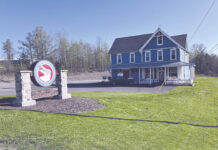While our row crop producers have the pedal down planting produce growers are getting ramped up for your local farm markets, syrup producers can finally breathe and dairy farmers never do seem to slow down. For me, it’s time to focus back on our trees. I’ve been blessed to have a service forester for a father, so with that came a family tree farm.
Is there a bad time to start planning? No, but as the showy redbuds and dogwoods fade to blooming locust and late leafing walnut, it’s time for me to focus on planning and managing our woods. It is purely personal preference as to how you want to manage your woods, but if there is one thing everyone should do, it is plan. This spectrum stretches from preservation to full-on production woodlots.
With variety comes an opportunity to fit your personal, or as in my case, family goals. The fun part for me is that our plan is not just for my generation, but our kids and, realistically, also our grandkids. Without a plan, rushing headlong into some unadvised option can be a 40-60 year decision; the one challenge with trees is we are planning the long game.
Invasives. Whether you are planning for preservation, wildlife, recreation, syrup production or timber, there are common challenges. We live in a world of “invasive” species: plants, animals or insects that aren’t native and live to out-compete our native species.
With invasives, it doesn’t matter your overall plan; be on the lookout. With many of invasives, it can take very little time to create a problem that will take years to rectify. For my tree farm, we’ve been working on grapevines, ailanthus (tree of heaven) and multiflora rose for years, and we are now battling Japanese stiltgrass and autumn olive on trails and openings.
Cutting
In many plans, there is some provision for cutting trees. While not a required practice, nature is going to do it regardless. As trees mature, their goal is food production, bigger canopy, taller canopy and larger tree. The only way this naturally happens is to out-compete their neighbors.
Planning can allow you to guide this process, removing undesirable species and encouraging those in the plan. This management takes as many forms as there are tree species, so working with a professional forester is a huge benefit.
Multiple uses
Another fun part of the planning process is that different priorities can be utilized on different areas of the same property. A fantastic example is a tree farm I get to frequent here in Holmes County. There are areas of preservation and historic old growth that stretch back hundreds of years. Just across the ridge is an area focused on timber production. All of this is present while incorporating areas of native prairie and a pond. Multiple uses all on the same property is common, but all ties back to a great plan.
Getting started
Piqued an interest in creating your own plan? Starting with professional advice is as easy as a phone call or email. The resources are out there for everything from a simple walk in the woods to a detailed U.S. Department of Agriculture Forest Management Plan. There are also organizations such as the Ohio Forestry Association, the Society of American Foresters or farm bureaus that have programs, services and individuals that are ready and willing to support you and your goals.
I’d be remiss if I also didn’t encourage talking to your local service forester. They are another fantastic resource with experience and perspective that can help guide your plans. While these professionals are busy, I haven’t met one that wouldn’t rather be in the woods with a landowner rather than in an office doing paperwork.
Your local soil and water conservation district can also be a resource to connect you with a forestry professional. Many SWCDs put on programs and workshops introducing different ideas and connecting producers. These workshops are not exclusive to county residents; we welcome all who are interested.
One upcoming workshop Holmes SWCD is working on will be May 23 and will focus on what to do before a timber harvest: timber Marking, timber stand improvement and invasive control. The workshop will include perspectives from professional foresters and industry personnel.
Regardless of who you work with to develop a plan, do it! It doesn’t have to be fancy, expensive or all encompassing, but you wouldn’t leave for a vacation without a plan — why should your forest be any different?













